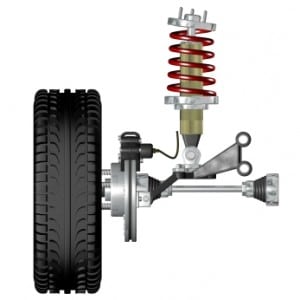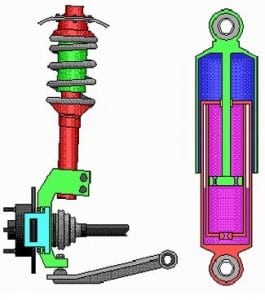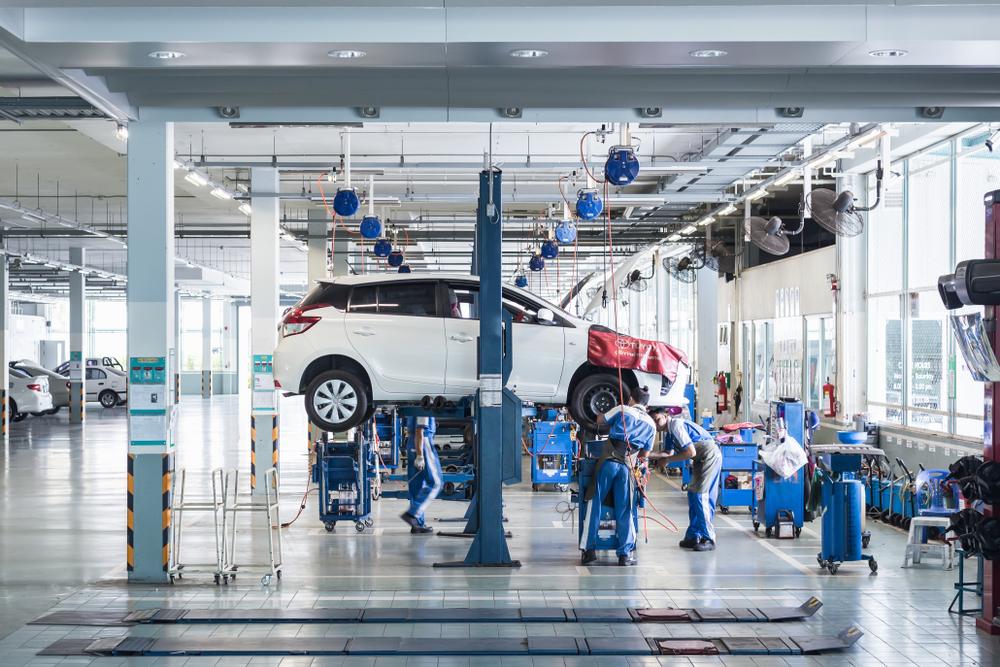Shocks and struts are something that most DIY mechanics have heard of, but not all fully understand what they are or why they’re important. It’s not unusual for the mechanic who’s trying to save a few bucks to either ignore problems with shocks or struts when they begin to appear or to skimp on which ones are purchased for the vehicle when replacement is required.
We’ve all heard the guy with the dragster or lifted truck talk about the thousands of dollars spent on the chassis, suspension, etc. and then say “but this is just a get-around car. I wouldn’t spend the money..” to justify going cheap or putting off replacement.
 The fact is, the shocks and struts on your car are one of the prime components for keeping it on the road, hold steering control, and keeping just about everything else on your car from breaking down sooner than it should. Without good shocks and struts, your car will not only be bumpy and uncomfortable to ride in, but will see more breakage as other components take excessive bumps and smacks they shouldn’t have to be subjected to.
The fact is, the shocks and struts on your car are one of the prime components for keeping it on the road, hold steering control, and keeping just about everything else on your car from breaking down sooner than it should. Without good shocks and struts, your car will not only be bumpy and uncomfortable to ride in, but will see more breakage as other components take excessive bumps and smacks they shouldn’t have to be subjected to.
So what do they do? They keep your car’s stability and balance even while driving. They hold the wheels to the pavement, keep the body level, and absorb most of the impact from small- and medium-sized bumps and divots in the roadway. They keep the impact of changes in the road from shuddering or smacking the other components of the car. Shocks also keep your car’s springs, which are its primary suspension component, from “bouncing” up and down, further lessening impacts.
Inspection for Trouble
Inspecting shocks and struts is pretty straight-forward. Look them over visually whenever you are under the car – oil changes, transmission service, brakes, etc.
Simply take the time to look them over and see if there are any leaks, any loose bolts, or any breakages. Nothing complicated, just look them over. This should be a habit along with the other inspections you should be doing. If you see leaks (usually oil-like substance or gel), cracked or broken components, etc., it’s time to replace your shock and/or strut. It’s generally done in pairs.
When driving, if you notice the car “bottoming out”, feel the front of the car dipping when you brake to a stop, feel the car “sway” when you are on a road that isn’t straight, or just feel you aren’t as in control of the vehicle as you should be.. inspect shocks and struts. They are the most likely cause for your concern.
Maintenance or Replacement Intervals?
 Shocks are usually good for anywhere from 50,000 to 100,000 miles on the typical car. How long it lasts will depend on driving conditions, quality of the shock absorber, and whether or not they’ve been over-compressed or hit with something to cause damage.
Shocks are usually good for anywhere from 50,000 to 100,000 miles on the typical car. How long it lasts will depend on driving conditions, quality of the shock absorber, and whether or not they’ve been over-compressed or hit with something to cause damage.
It’s always a good idea to inspect them regularly and begin thinking about replacing them when they begin to get past the 50,000 mile mark. Many smart home mechanics will, when their shocks begin to reach a high age, start watching for sales or low prices on shocks for their car and purchase them when they can get them at the best price, then store them in the garage or basement until they’re needed.
As with most components, shocks and struts can be “pre-emptively” replaced rather than waiting for failure, but this is usually overkill and means you won’t be getting the most out of the set you already have. It’s very rare for shocks or struts to suddenly fail, they usually begin to degrade slowly and will show signs of weakening or leaking before they “collapse.”
Replacement Costs and Procedures
The price tag on a pair of shocks or struts is dependent on the car. Most passenger cars will have struts ranging from $200 to $500 per pair (front or rear), with the front typically costing more than the rear set. Again, it depends largely on the vehicle. Shocks are usually about 1/3 to 1/2 the price of struts.
Replacement is relatively easy and straight-forward on most vehicles. On the typical front-wheel drive car, for example, rear struts are just a matter of three or four bolts, removal of the strut, and replacement. Most competent home mechanics can do this in twenty minutes to half an hour for a pair (both sides, rear). Front shocks are more complicated and can take three times as long, because of the steering components involved, and a front wheel alignment is usually recommended after strut replacement whether the car is front- or rear-wheel driven.
Shocks are considerably easier to do and usually require only that the vehicle be safely lifted and two to three bolts per shock be removed to take out the old shock.
Most vehicle service manuals will recommend that the front and wheel axles be aligned after a shock or strut replacement interval.







